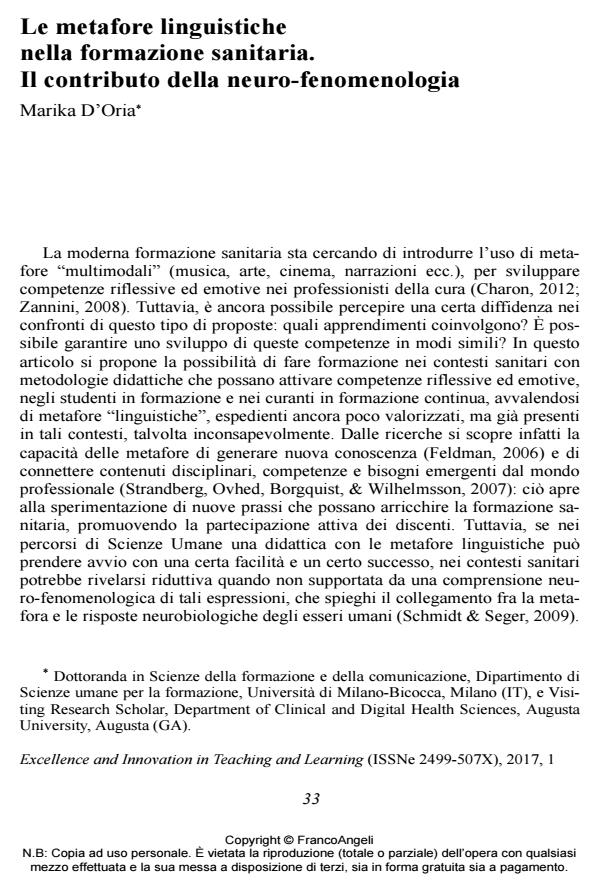Le metafore linguistiche nella formazione sanitaria. Il contributo della neuro-fenomenologia
Titolo Rivista EXCELLENCE AND INNOVATION IN LEARNING AND TEACHING
Autori/Curatori Marika D’Oria
Anno di pubblicazione 2017 Fascicolo 2017/1
Lingua Italiano Numero pagine 17 P. 33-49 Dimensione file 178 KB
DOI 10.3280/EXI2017-001003
Il DOI è il codice a barre della proprietà intellettuale: per saperne di più
clicca qui
Qui sotto puoi vedere in anteprima la prima pagina di questo articolo.
Se questo articolo ti interessa, lo puoi acquistare (e scaricare in formato pdf) seguendo le facili indicazioni per acquistare il download credit. Acquista Download Credits per scaricare questo Articolo in formato PDF

FrancoAngeli è membro della Publishers International Linking Association, Inc (PILA)associazione indipendente e non profit per facilitare (attraverso i servizi tecnologici implementati da CrossRef.org) l’accesso degli studiosi ai contenuti digitali nelle pubblicazioni professionali e scientifiche
Metaphors can enhance students’ reflective skills. After the advantages and the limitations showed in the literature review, a neuro-phenomenological approach suggests how to use linguistic metaphors in health education.
Parole chiave:Linguistic metaphor; health education; neuro-phenomenology; adult education; innovative teaching; literature review.
Marika D’Oria, Le metafore linguistiche nella formazione sanitaria. Il contributo della neuro-fenomenologia in "EXCELLENCE AND INNOVATION IN LEARNING AND TEACHING" 1/2017, pp 33-49, DOI: 10.3280/EXI2017-001003